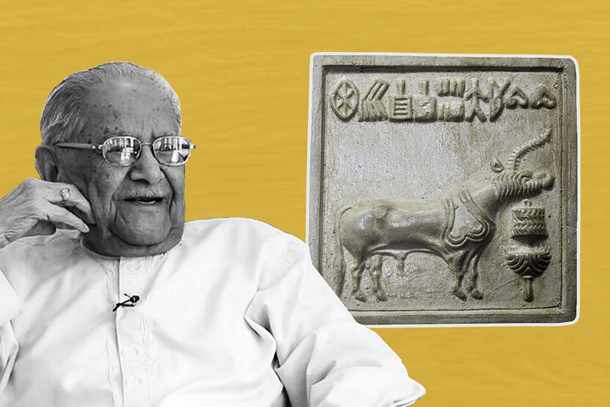Culture
Remembering ‘The Sherlock Holmes of Indian Archaeology’ Prof B B Lal
Swarajya Staff
Sep 17, 2022, 06:49 PM | Updated 06:49 PM IST
Save & read from anywhere!
Bookmark stories for easy access on any device or the Swarajya app.


Truths that had no tellers found in Professor Braj Basi Lal their ‘Sherlock Holmes’. For he literally excavated them out of their deepest pits where they had been buried tactfully by agenda that sought to tell its version of the tale as the only one.
Professor BB Lal, as he was popularly called, has become synonymous with the ‘discovery’ of the Ram Mandir in Ayodhya, for he was the first to mince no words in admitting that it did once stand there in all its glory, way back in the 1990s.
And with his passing away earlier this week at a ripe age of 101, of which over seven decades were devoted to discovering inconvenient truths, we have lost the Bhishma Pitamaha of Indian Archaeology.
As his son Rajesh Lal wrote in the preface to a felicitation volume titled 'Felicitating Legendary Archeologist Prof B B Lal,' five years ago, there probably isn't ‘anyone who has spent seventy years without a break, either excavating, reseraching, writing and last but not the least, dreaming about archaelogy, age 96 years being a matter of body, not that of mind.’
As he completed his century last year, he was awarded the Padma Vibhushan by the government of India. Archaeologist K K Muhammed took a walk down memory lane on that occasion. (Read it here)
A leitmotif in the lime and work of Lal was that his discoveries altered popular perception, dismantling theories held so far and installed truths that have stayed unquestioned to date.
Be it the discovery of pillars beneath the masjid that stood at the site where now will soon stand the grand temple of Ram Lalla at Ayodhya, or the discoveries through his extensive archaeological work at the Harappan site of Kalibangan, Lal’s contribution to Indian archaeology stay unparalleled.
Read about his journey with the Harappan discoveries here.
Although he trained under Mortimer Wheeler, who was a strong proponent of the Aryan invasion theory, Lal, who initially did believe in this hypothesis, his work then led him to prove otherwise. Lal wrote:
It is thus abundantly clear that the origin of the Harappan Civilization goes back to the 6th millennium BCE, if not earlier. It is also likely that further field work may bring to light a still earlier stage. Anyway, the Harappan Civilization cannot be regarded as an ”import“from elsewhere. It is ”indigenous”. And since, as already shown, the Harappans and the Vedic people are the same, the latter ipso facto are indigenous – neither invaders nor immigrants.
Another key contribution of the stalwart was his work ascertaining the historicity of the epics Mahabharata (1950s) and Ramayana, of which the former, he has, in an interview, called the first most satisfying moment of his life. He said:
A seeker after truth keeps on getting satisfaction from everything he does. Thus, each new problem that I tackled gave me satisfaction. However, the first major satisfaction came when in the 1950s I was able to establish, through archaeological fieldwork, the historicity of the Mahabharata.
It is beyond any piece of writing to pay a befitting tribute to the legend that was Lal, for he redefined the journey of digging out truths starting from 1944 to joining the Archaeological Survey of India where he served as its Director-General from 1968 to 1972, to excavating landmark civilisational sites of Hastinapura, Sisupalgarh, Purana Qila, Kalibangan, Ayodhya, Bharadvaja Ashrama, Sringaverapura, Nandigrama and Chitrakoota.
In the words of condolence of our PM Narendra Modi, Prof B B Lal’s “contributions to culture and archaeology are unparalleled. He will be remembered as a great intellectual who deepened our connect with our rich past.”
Also Read: B B Lal: A Life In Search Of Truth





